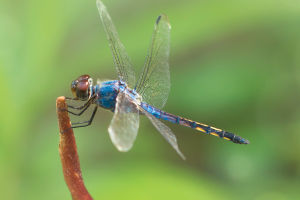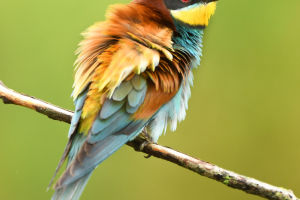In the realm of nature's finest avian wonders, the kingfisher stands as a true jewel, bridging the realms of water and sky with its exquisite beauty and remarkable adaptations.
With its dazzling plumage and remarkable hunting prowess, the kingfisher has captured the imagination of humans across cultures and throughout history.
The kingfisher's remarkable appearance is a visual testament to the wonders of evolution. Adorned with brilliant shades of blue, green, and orange, its plumage seems to shimmer like precious gemstones when caught in the sunlight. This vibrant coloration serves a dual purpose. While it undoubtedly enhances the bird's aesthetic appeal, it also plays a crucial role in its survival.
The vivid hues serve as a form of camouflage in its aquatic habitat, allowing it to blend seamlessly with the play of light on water surfaces, making it a stealthy predator.
One of the most awe-inspiring spectacles involving the kingfisher is its hunting behavior. This bird's unique adaptations for piscivorous (fish-eating) habits are a testament to nature's ingenuity. Perched on a branch or a snag, the kingfisher scans the water below with keen eyesight, searching for the faintest ripples that betray the presence of its underwater quarry. In a split second, it plummets from its perch with astonishing precision, diving into the water like an arrow shot from a bow.
Its streamlined body and dagger-like bill allow it to cut through the water effortlessly, reaching depths of up to four feet to snatch its prey. With a success rate that often surpasses other predators, the kingfisher's hunting technique is a testament to millions of years of refinement.
Beyond its hunting prowess, the kingfisher's life cycle and behavior also hold a sense of wonder. Many kingfisher species are known for their unique nesting habits, often digging burrows into the banks of rivers and streams. These burrows provide a haven for raising their young away from predators. Inside these earthen tunnels, the female lays her eggs and cares for her offspring, while the male assists with feeding and protecting the nest. It's a testament to the intricate social structure and parental devotion of these birds.
Cultures around the world have been captivated by the kingfisher's beauty and symbolism. In ancient mythology, the kingfisher was often associated with calm waters and tranquility. Its vibrant plumage and graceful flight have inspired poets and artists, gracing the pages of literature and canvas alike. In some cultures, the kingfisher is considered a symbol of prosperity and good fortune, while in others, it holds spiritual significance, embodying qualities of patience, adaptability, and resilience.
Despite its enduring appeal, the kingfisher faces challenges in a rapidly changing world. Habitat loss, pollution, and climate change threaten the delicate ecosystems on which these birds rely. Conservation efforts are vital to ensuring that future generations can continue to marvel at the kingfisher's beauty and marvel at its remarkable adaptations.
The kingfisher stands as a true marvel of the natural world, a delicate balance between aesthetics and functionality. Its brilliant plumage and awe-inspiring hunting techniques have enchanted humans for centuries, while its nesting habits and symbolism add layers of depth to its appeal. As we continue to appreciate and study this remarkable creature, let us also strive to protect the habitats that sustain it, ensuring that the kingfisher's vibrant presence continues to grace our waterways and skies for generations to come.


